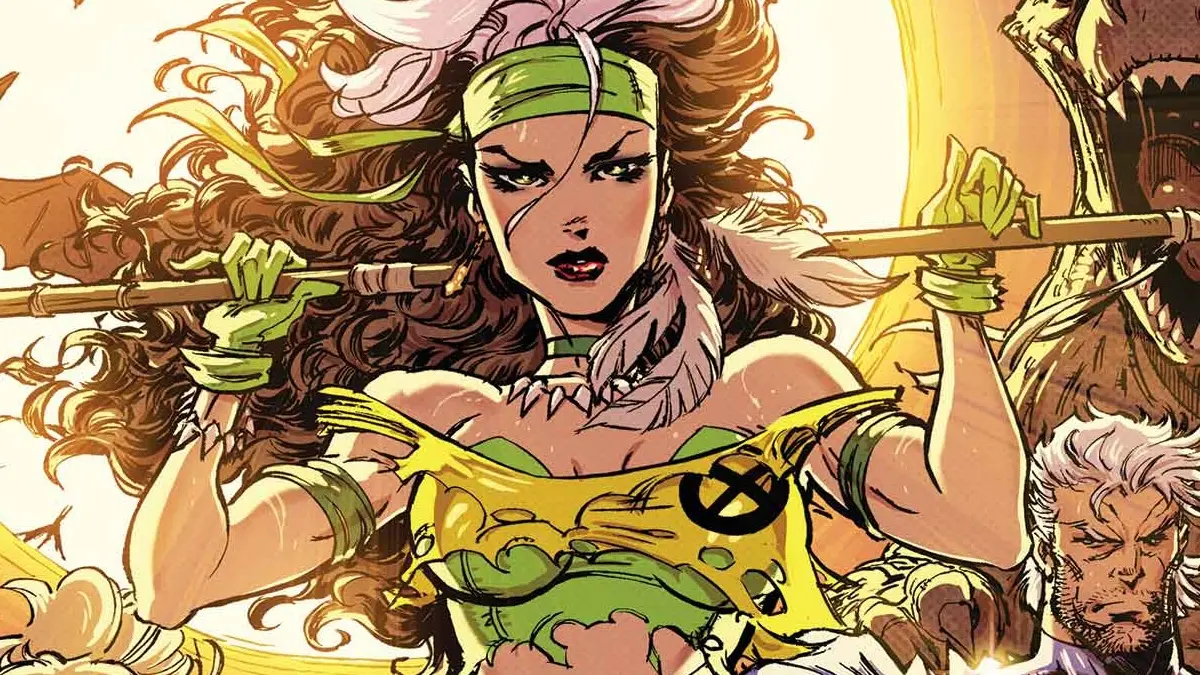Rogue Reading Order Guide – Marvel’s Absorbing Heroine
Who is Rogue? From Absorbing Powers to Winning Hearts
Rogue, born Anna Marie, is one of Marvel’s most emotionally complex and beloved mutants. First appearing in Avengers Annual #10 (1981), she began her comic journey as a villain under the mentorship of Mystique and a member of the Brotherhood of Evil Mutants. Her powers to absorb the memories, powers, and life force of others by touch made her both dangerous and deeply isolated.

Photo : Marvel Fandom
Her breakthrough came when she permanently absorbed the powers of Ms. Marvel (Carol Danvers), gaining super strength, flight, and invulnerability. Wracked with guilt and unable to control her touch, Rogue turned to the X-Men for redemption. Over time, she transformed from outsider to leader, proving herself a fierce warrior and compassionate ally.
To truly understand her growth, emotional layers, and key turning points, a proper Rogue reading order is crucial.
Why the Rogue Reading Order Matters
Rogue’s journey through Marvel Comics is far from straightforward. Transitioning from a conflicted villain to one of the X-Men’s most trusted leaders, her path unfolds across numerous team books, solo arcs, and major crossover events. A well-structured Rogue reading order allows readers to fully appreciate the evolution of her character, her battles with identity, and her shifting dynamics with characters like Gambit, Mystique, and even the Avengers.
Rogue embodies a powerful mix of strength and sensitivity—her struggle to control her powers is symbolic of the larger mutant experience. Those intrigued by nuanced, emotionally rich narratives—especially her intertwined story with Gambit—will find her development deeply rewarding. For more on their shared arc, see our Gambit reading order.
Key Phases in Rogue’s Comic Evolution
Villain and Power Crisis (1980s)
Rogue debuts in Avengers Annual #10, attacking Carol Danvers. She joins the Brotherhood but struggles with the consequences of permanently absorbing Ms. Marvel's powers and memories. Her redemption arc begins in Uncanny X-Men #171, where she seeks refuge and forgiveness from the X-Men.
X-Men Core Member and Romance (1990s)
As a mainstay in the X-Men, Rogue participates in major arcs like Inferno, Age of Apocalypse, and Fatal Attractions. Her on-again, off-again romance with Gambit develops during this time. She wrestles with trust, control, and identity while proving her loyalty and bravery repeatedly.
Solo Journey and Evolution (2000s–2010s)
Rogue leads her own teams in X-Men (2004) and stars in her own Rogue (2004) solo series. She becomes an instructor at the Xavier Institute and later leads the team in X-Men Legacy. During Messiah Complex and Second Coming, her strategic thinking shines.
Unity Squad and Avengers Era (2013–Present)
Rogue joins the Uncanny Avengers, bridging the gap between mutants and humans. She becomes a core member and even leads the Unity Squad. Her marriage to Gambit is explored in Mr. & Mrs. X, while X-Men (2021) places her back at the heart of the mutant community on Krakoa.
Rogue Reading Order: Essential Comics
- Avengers Annual #10 – First appearance and Ms. Marvel incident
- Uncanny X-Men #171 – Joins the X-Men
- X-Men Vol. 2 (1991–2001) – Classic team adventures
- Rogue (2004) – First solo mini-series
- X-Men Legacy (2008–2012) – Rogue as team leader
- Uncanny Avengers (2013–2015) – Human-mutant diplomacy
- Mr. & Mrs. X (2018) – Relationship and team-up with Gambit
- X-Men (2021–Present) – Krakoa and beyond
Rogue in Major Marvel Events
Rogue has played vital roles in Inferno, Age of Apocalypse, Messiah Complex, Avengers vs. X-Men, and House of X. She often represents the emotional center of team conflicts and has been key in building mutant-human alliances.
Alternate Versions and Legacy
Alternate Rogues appear in Age of X, What If...?, and the Ultimate Universe. Her TV portrayals in the 1990s X-Men animated series and X-Men '97 have made her even more iconic. Despite changes in backstory or powers, Rogue’s emotional strength remains constant.
Where to Start Reading Rogue
Start with Avengers Annual #10 and Uncanny X-Men #171 for origin and redemption. Dive into Rogue (2004) and X-Men Legacy for solo growth. For modern Rogue, read Uncanny Avengers and X-Men (2021).
Where to Read Rogue Comics Legally
To enjoy Rogue’s stories legally and in high quality, use:
- Marvel Unlimited – Marvel’s official digital comics library.
- ComiXology, Amazon Kindle, or your local comic book shop.
Rogue Reading FAQs
Why can’t Rogue touch people?
Her mutant ability absorbs life force and memories on contact. She has learned control over time, but it remains a source of inner conflict.
Is Rogue an Omega-level mutant?
No, but she is extremely powerful. Her absorption ability can copy even Omega-level powers temporarily.
What is her relationship with Mystique?
Complicated. Mystique raised her but also manipulated her. Their relationship has swung between family, betrayal, and reconciliation.
What makes Rogue unique?
Her emotional depth. She carries the memories and traumas of others, adding empathy and complexity to her identity.
Final Thoughts on the Rogue Reading Order
Rogue’s story is one of transformation—from feared outsider to heroic leader. The Rogue reading order showcases her battles for control, connection, and identity. Whether she’s soaring through battle or navigating inner storms, Rogue remains one of Marvel’s most inspiring characters. Start your journey into her story today.
Leave a comment
Your email address will not be published. Required fields are marked *








